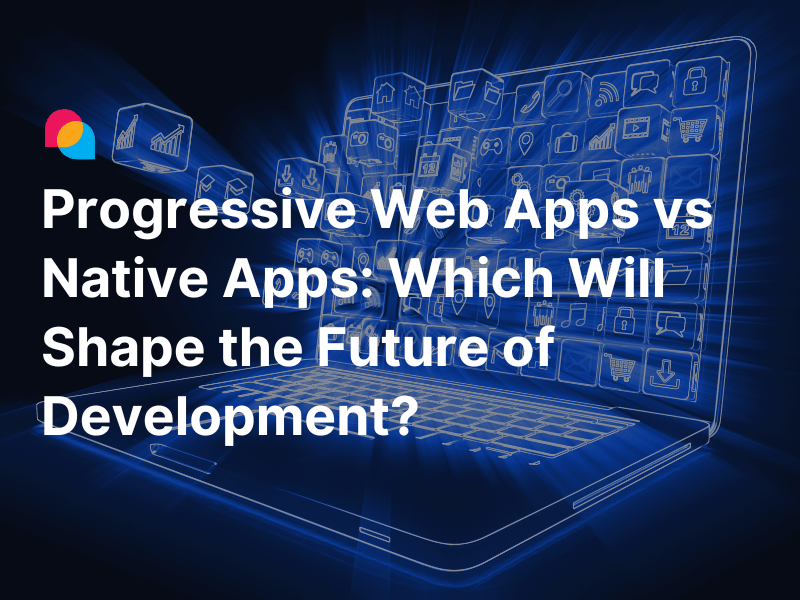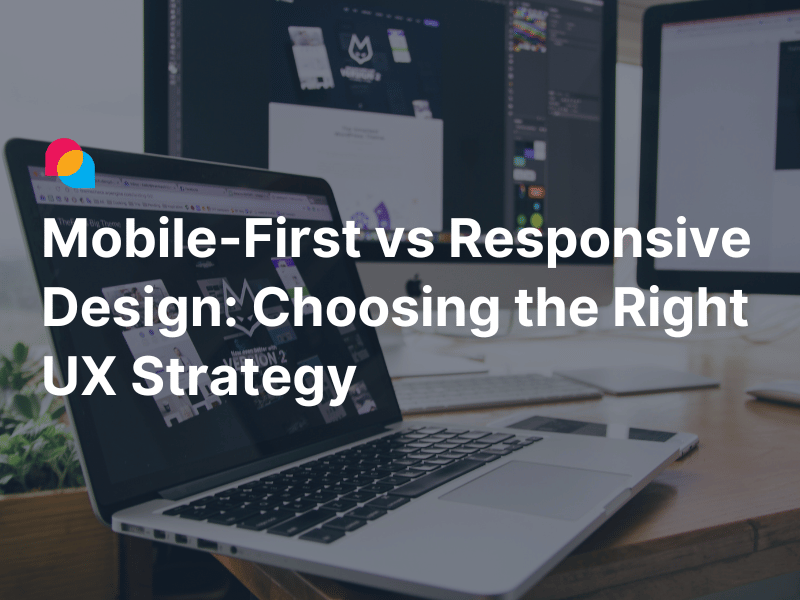Why It Matters More Than Ever
Not too long ago, having a clean interface was enough to keep people coming back. Rounded corners, responsive layouts, and the right amount of white space gave you an edge. But the game has changed.
Today’s users expect more than design; they expect recognition. Not in the form of a pop-up saying, “Hey, Dave!” but in experiences that understand where they are, what they need, and what they’re trying to do next.
And here’s where AI in UX design quietly steps in. Not as a headline feature. Not as a futuristic gimmick. But as the invisible scaffolding behind the apps that feel right. When personalization works well, we don’t notice it. We just stay longer. Click more. Come back tomorrow.
we've seen this shift happen firsthand. One project we was on, we watched bounce rates drop by half; not after a visual redesign, but after we introduced behavioral-based recommendations powered by a simple machine learning model. Sometimes, what makes an experience great isn’t what you add to the screen; it’s what the system already knows before the user clicks.
UX: From Gut Feel to Intelligent Response
There was a time; maybe ten years ago; when most UX design decisions were made by intuition. You’d wireframe an idea, show it to a few folks, and if it looked good and passed a usability test, you’d ship it.
But the way people interact with software has become more nuanced. They scroll without thinking. They tap before reading. They expect apps to adapt, to guide, to anticipate. And let’s be honest; no amount of A/B testing can keep up with that in real-time.
That’s where AI has changed the rules.
It’s not about replacing designers or developers. It’s about giving us better signals. A designer might notice that users hesitate on a form field. AI can tell you why; and how often it happens across devices, time zones, or user segments.
One client we worked with used heatmaps religiously. But once we started layering predictive analytics on top of those heatmaps, patterns emerged that had nothing to do with the layout. People weren’t stuck because the button was in the wrong place; they were stuck because the page didn’t answer their unspoken question.
AI doesn’t make UX smarter by magic. It makes it smarter by listening better than we ever could alone.
Personalization Isn’t Just a First Name
Let’s clear something up: personalization isn’t about slapping a name on the dashboard and calling it a day. “Welcome back, Alex” is fine; but it’s surface-level. Shallow personalization might earn a raised eyebrow. Deep personalization earns trust.
Real personalization is subtle. It shows up when the app skips steps you’ve already done. When it recommends a feature you didn’t know you needed; but now can’t imagine not using. When it gently reminds you to finish what you started without feeling like a nag.
We've worked with teams who thought personalization meant “make it feel friendly.” But friendliness isn’t the point. Relevance is.
Here’s how we've come to think of it:
|
Personalization Layer |
What It Feels Like |
Common Trap |
|
Shallow |
“Hi, Sam!” |
Looks personal, but isn’t useful |
|
Behavioral |
“Here’s where you left off.” |
Can feel repetitive if not updated |
|
Contextual |
“Looks like you’re at the airport; need offline access?” |
Risk of being creepy if overdone |
|
Predictive |
“You’ll probably want to revisit this tomorrow.” |
Can feel magical; or invasive |
The difference between helpful and creepy? It usually comes down to timing, subtlety, and; most of all; user control.
How AI Actually Shows Up in UX Work
When people hear “AI,” they often imagine sci-fi robots or glowing brains in clouds. But in product teams, AI looks a lot less dramatic; and a lot more practical.
Let we give you an example that we've either worked on or seen in real-world tools:
➤ Layout Adaptation
In one project, we built a mobile onboarding flow that would adjust based on device performance. Older phones got simpler animations. Faster ones got richer transitions. AI helped us tune those experiences without bloating the codebase.
➤ Recommendations That Don’t Feel Random
Spotify and YouTube get a lot of attention for this; and rightly so. Their suggestion engines don’t just serve what’s popular. They serve what you are likely to enjoy, based on hundreds of tiny behavioral cues. It’s not perfect, but when it works; it feels effortless.
What ties all of these together isn’t that they “use AI.” It’s that they use it to reduce friction, not add it. To respect time, not waste it. And to respond to users without overwhelming them.
Data, Consent, and Trust: The Tension Behind the Magic
Let’s talk about the part of AI-powered UX no one loves to address: data. More specifically, who gets it, how they use it, and whether users even know it’s being collected.
we've sat in meetings where someone pitched a feature that tracked user behavior in microscopic detail; down to cursor movement. Technically possible? Sure. Ethically sound? That’s a different conversation.
When we build experiences that adapt in real-time, we rely on data. But trust isn’t a technical setting; it’s something earned. That means being upfront. Clear. Respectful.
Here are some of the principles we've seen work well in the wild:
- Transparency over cleverness: Don’t bury your data policies in legalese. Speak like a human.
- Opt-in beats opt-out: Let users choose personalization; and make it easy to change their mind.
- Design for control: Give people knobs and levers. Let them tune the experience to their comfort level.
One of the cleanest implementations we've seen was in a health app. Right from the start, it asked: “Would you like us to personalize your content based on your habits? You can change this anytime.” That’s it. No smoke and mirrors. Just honest UX.
Because if your user doesn’t trust the product, no amount of intelligence will make them stick around.
From Personas to Patterns: How AI Changes User Research
In the early days of product design, we built personas. Names. Faces. Motivations. We gave them backstories. “Ms.A is 35, loves organic food, and shops online twice a week.” Helpful? Sometimes. But often too neat for the messy reality of real users.
Now, with AI tools, we can move past guesses.
We remember using a clustering tool on user data from an app. Instead of three tidy personas, we uncovered six behavior-based segments we hadn’t even thought of; people who logged in only to check exchange rates, folks who used the app at night but never during work hours, and one group who only used fingerprint login and nothing else. These patterns weren’t fictional; they were real.
AI doesn’t replace user research. It gives it sharper edges.
Some tools worth noting:
- Session replay with emotion tracking
Not just where users click, but how they do it; fast, hesitant, rushed?
- Sentiment analysis on user feedback
Useful when you’re trying to understand if “fine” really means “fine.”
- Rapid feedback loops with AI-generated A/B variants
Helps you test more ideas, faster, without overwhelming your team.
This doesn’t mean we stop listening to users. It means we listen better. With more clarity, more empathy, and fewer assumptions.
The Feedback Loop That Never Sleeps
In the old days, we’d ship something, wait for feedback, and adjust every few months. With AI, feedback is continuous. The loop never stops.
One product we worked on used a machine learning model to adjust micro-copy in real time. A user struggling with a form field? The system offered a softer tone. Confident users? More direct prompts. It wasn’t perfect, but the result? More completions. Fewer drop-offs. Happier users.
Here’s what this looks like in practice:
|
Optimization Method |
Traditional UX |
AI-Powered UX |
|
A/B Testing |
Run every few weeks |
Runs continuously, adapts in real-time |
|
Content Tuning |
Manual adjustments |
Auto-adapts based on sentiment/data |
|
Layout Changes |
Based on aggregate data |
Personalized for each user session |
AI doesn’t just suggest improvements; it makes them, moment to moment. That’s a shift in mindset. We’re not just designing for users anymore. We’re designing with systems that learn from them.
When Personalization Backfires
Of course, it’s not always sunshine and perfectly predicted clicks.
we've seen personalization miss the mark; and when it does, it can feel worse than no personalization at all.
Overfitting
This happens when the system assumes too much. You bought a baby gift once? Now every homepage looks like a parenting blog. Users feel boxed in; and annoyed.
Creepy Suggestions
There’s a fine line between “thoughtful” and “how did they know that?” If users feel watched, they’ll walk away.
Design Complexity
Sometimes the drive for intelligence adds too many moving parts. Features pile up. Logic branches multiply. What starts as helpful ends up overwhelming.
The fix? Go back to basics. Test early. Ask real people. And above all, remember: just because AI can personalize something doesn’t mean it should.
Where It’s Going: Prediction, Not Prescription
Looking ahead, we don’t think AI in UX will be about doing more. I think it will be about doing less; but better.
Imagine interfaces that feel like conversations, not control panels. Products that know when not to interrupt. Systems that offer help before we realize we need it; like a good waiter refilling your water without being asked.
Some signals are already here:
- Emotion-aware UIs that adapt tone based on facial cues or typing rhythm.
- Co-design tools that suggest UI improvements in real-time.
- Predictive UX that shifts based on your day, your focus, even your emotional state.
We're not quite there yet. But we’re close. And when we get there, the best designs won’t be the most intelligent; they’ll be the ones that feel the most human.
Final Thoughts
AI in UX design isn’t about fancy tech. It’s about making things feel effortless. Personalization isn’t about personalization; it’s about respect. Recognition. And relevance.
The tools have changed, yes. But the goal hasn’t: to make digital experiences that work with people, not just for them.
And if we can get that right, maybe we’ll finally build the kind of UX that doesn’t just function; it connects.





